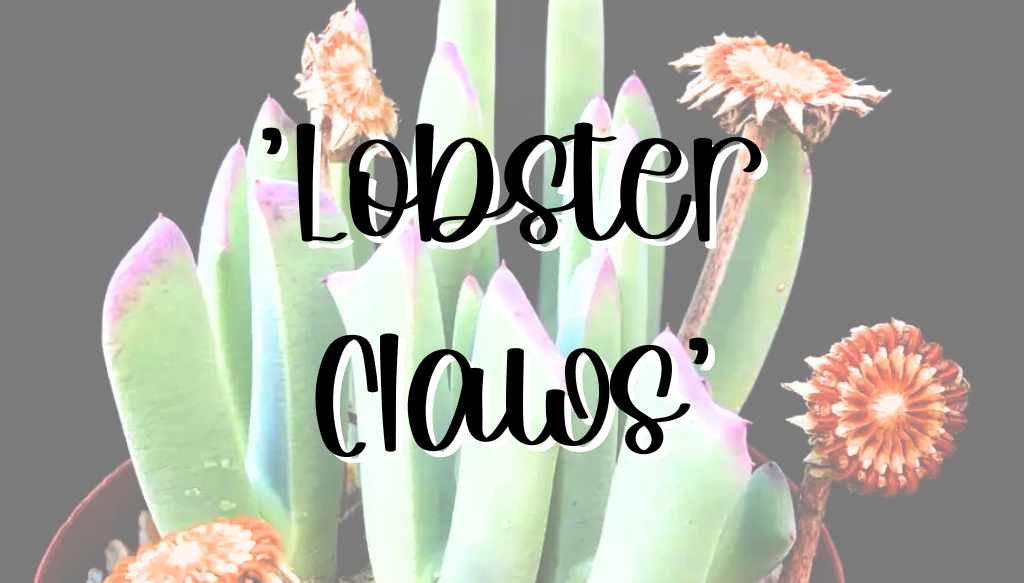Are you looking for a unique and eye-catching plant to add to your collection? Look no further! Cheiridopsis candidissima, commonly known as ‘Lobster Claws’, is a charming and distinctive succulent that deserves a place in your garden or on your windowsill. In this comprehensive guide, we’ll cover everything you need to know about this fascinating plant, from its origin and appearance to its growing conditions and propagation methods.
Dig in!
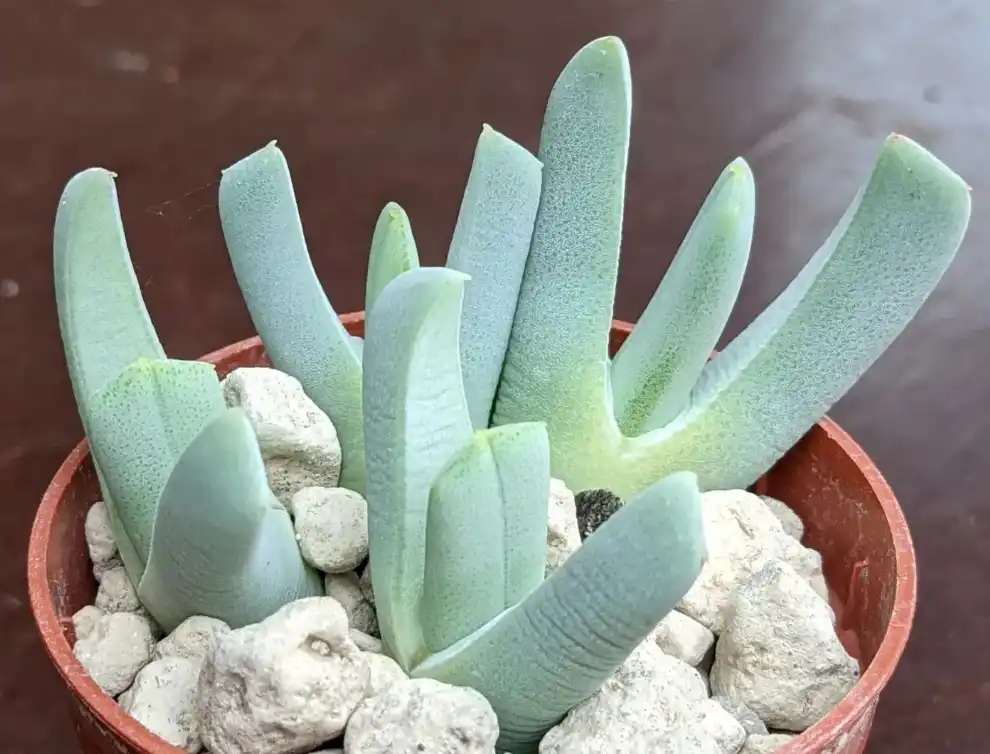
Origin and Distribution of Cheiridopsis candidissima ‘Lobster Claws’
Habitat
Cheiridopsis candidissima hails from South Africa, specifically the Northern Cape Province. This succulent thrives in rocky outcrops and sandy plains, where it can stretch its roots and soak up the intense sunshine. Interestingly, the plant’s natural habitat experiences a winter rainfall, which means it’s adapted to survive long periods with little to no water.

Appearance
Leaves
One of the most striking features of the Lobster Claws is its thick, fleshy leaves, which grow in opposing pairs. These leaves are covered in a powdery white coating, called farina, which helps protect the plant from harsh sunlight. The leaves also store water, making them perfectly equipped for survival in arid environments.
Flowers
Lobster Claws are true showstoppers when it comes to their blooms. The flowers are bright yellow, tubular in shape, and can measure up to 1.5 inches (4 cm) in diameter. They typically appear in winter and early spring, adding a burst of color to your garden when most other plants are dormant.
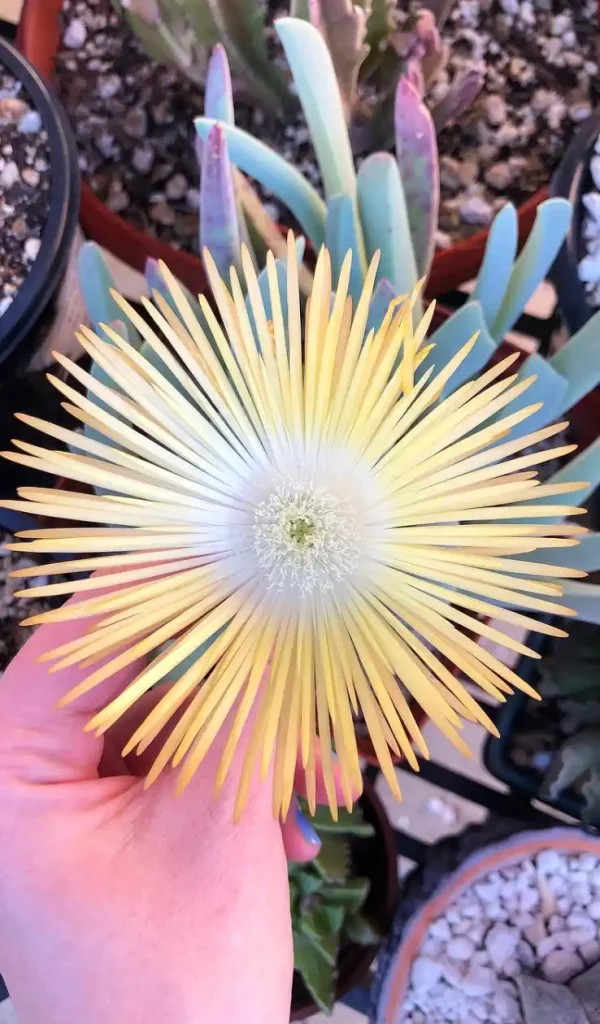
Growing Conditions
Light Requirements
Like most succulents, Cheiridopsis candidissima needs plenty of sunlight to thrive. Aim to provide at least 6-8 hours of bright, indirect light each day. If you’re growing Lobster Claws indoors, place them near a south- or west-facing window to ensure they receive adequate light.
Temperature and Hardiness
Lobster Claws are relatively hardy plants, tolerating temperatures as low as 20°F (-6°C). However, they prefer a more moderate climate, with daytime temperatures between 65-80°F (18-27°C) and nighttime temperatures around 50-55°F (10-13°C). If you live in an area with harsh winters, consider bringing your Lobster Claws inside to protect them from frost damage.
Soil
When it comes to soil, well-draining is key for healthy Lobster Claws. A gritty, sandy mix with good aeration is ideal. You can create your own mix by combining equal parts potting soil, pumice or perlite, and coarse sand. This will ensure that excess water drains away from the roots, preventing root rot.

Consider amending your soil with Bonsai Jack’s gritty mix to ensure your succulent soil drains quickly to prevent it from staying moist for too long. Source: Etsy
Water
Lobster Claws are drought-tolerant plants, but they still need regular watering to thrive. During the growing season, water your succulent once the soil is completely dry, usually every 7-10 days. In winter, reduce watering to once every 4-6 weeks, as the plant enters a dormant period.
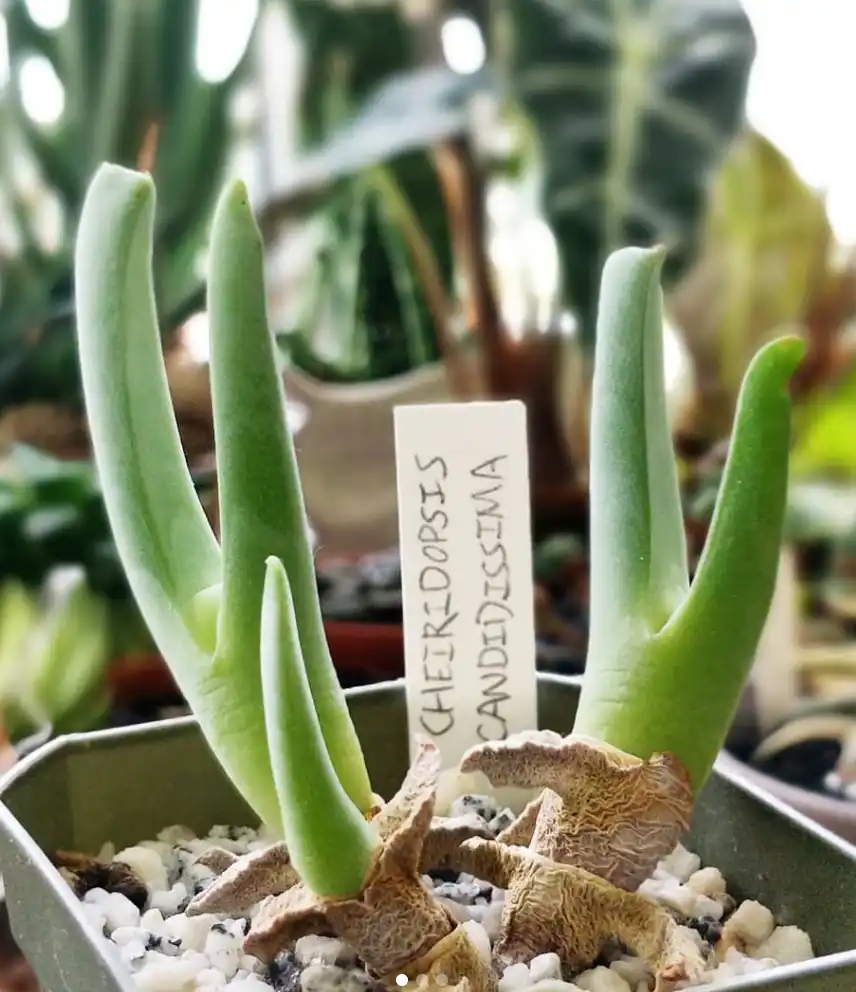
Propagation
Seeds
Growing Lobster Claws from seed is a rewarding process, although it can be slow. To begin, fill a small container with well-draining soil and sprinkle the seeds on top. Cover them lightly with a thin layer of sand or soil, then water carefully to avoid disturbing the seeds. Keep the container in a warm, bright location and wait for the seeds to germinate, which can take several weeks.
When you’re rooting or transplanting your succulents and cacti, use SUPERthrive to help reduce the chance of transplant shock and grow a strong root system.
Common Pests and Diseases
Mealybugs
These small, cotton-like insects can be a nuisance for Lobster Claws. They suck the sap from the plant, causing leaves to become distorted and discolored. To control mealybugs, use a cotton swab dipped in rubbing alcohol to remove them from the plant, or try introducing natural predators like ladybugs.
Fix the pest problem on your succulents and cacti with these popular insecticides.
Root Rot
Overwatering can lead to root rot, which is a common problem for succulents like Lobster Claws. To prevent this, be sure to use well-draining soil and only water when the soil is completely dry. If you notice your plant’s leaves turning yellow and mushy, it may be suffering from root rot. Remove the plant from its pot, trim away any affected roots, and repot in fresh soil.
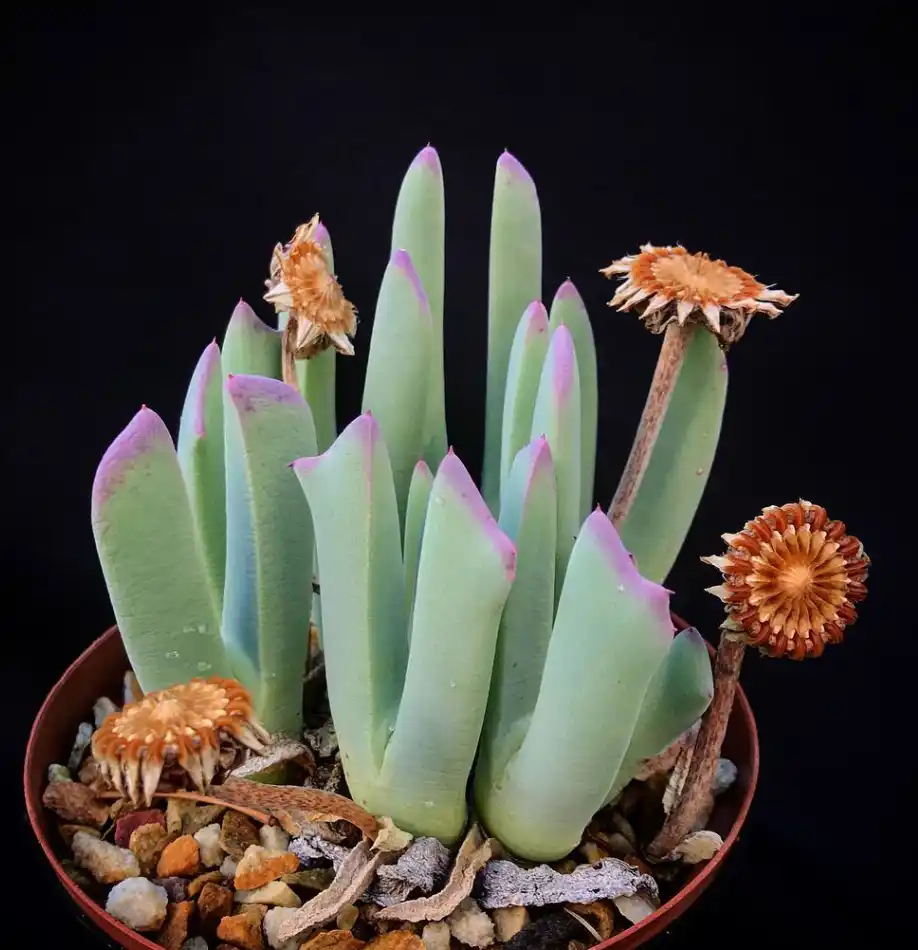
Fun Facts
- Did you know that the genus name “Cheiridopsis” comes from the Greek words “cheir,” meaning “hand,” and “opsis,” meaning “appearance”? This refers to the way the leaves resemble hands clasped together.
- Lobster Claws are part of the Aizoaceae family, also known as the “Ice Plant” family. This diverse group of plants includes other popular succulents like Lithops and Conophytum.
- The farina, or powdery coating, on Lobster Claws’ leaves is an example of a natural sunscreen. It helps protect the plant from harmful UV rays, just like the sunscreen we use on our skin!
- Cheiridopsis candidissima can live for several decades, making it a long-lasting addition to your succulent collection.
- The Lobster Claws’ flowers are pollinated by insects, such as bees and butterflies. The bright yellow color and tubular shape of the blooms make them particularly attractive to these pollinators.
Cheiridopsis candidissima, or Lobster Claws, is a unique and captivating succulent that will add intrigue and beauty to any garden or indoor space. With its distinctive leaves, stunning flowers, and relatively easy care requirements, this South African native is a must-have for succulent enthusiasts. By following the tips and guidelines provided in this comprehensive guide, you’ll be well on your way to enjoying a thriving Lobster Claws plant for years to come.
Frequently Asked Questions
1. Can Lobster Claws be grown indoors?
Yes, Lobster Claws can be grown indoors as long as they receive enough light. Place them near a south- or west-facing window to ensure they get the sunlight they need.
2. Why are my Lobster Claws’ leaves turning yellow and mushy?
Yellow, mushy leaves can be a sign of overwatering and root rot. Make sure you’re using well-draining soil and only water when the soil is completely dry.
3. When does Cheiridopsis candidissima bloom?
Lobster Claws typically bloom in winter and early spring, providing a pop of color when many other plants are dormant.
4. How often should I water my Lobster Claws?
During the growing season, water your Lobster Claws once every 7-10 days or when the soil is completely dry. In winter, reduce watering to once every 4-6 weeks.

